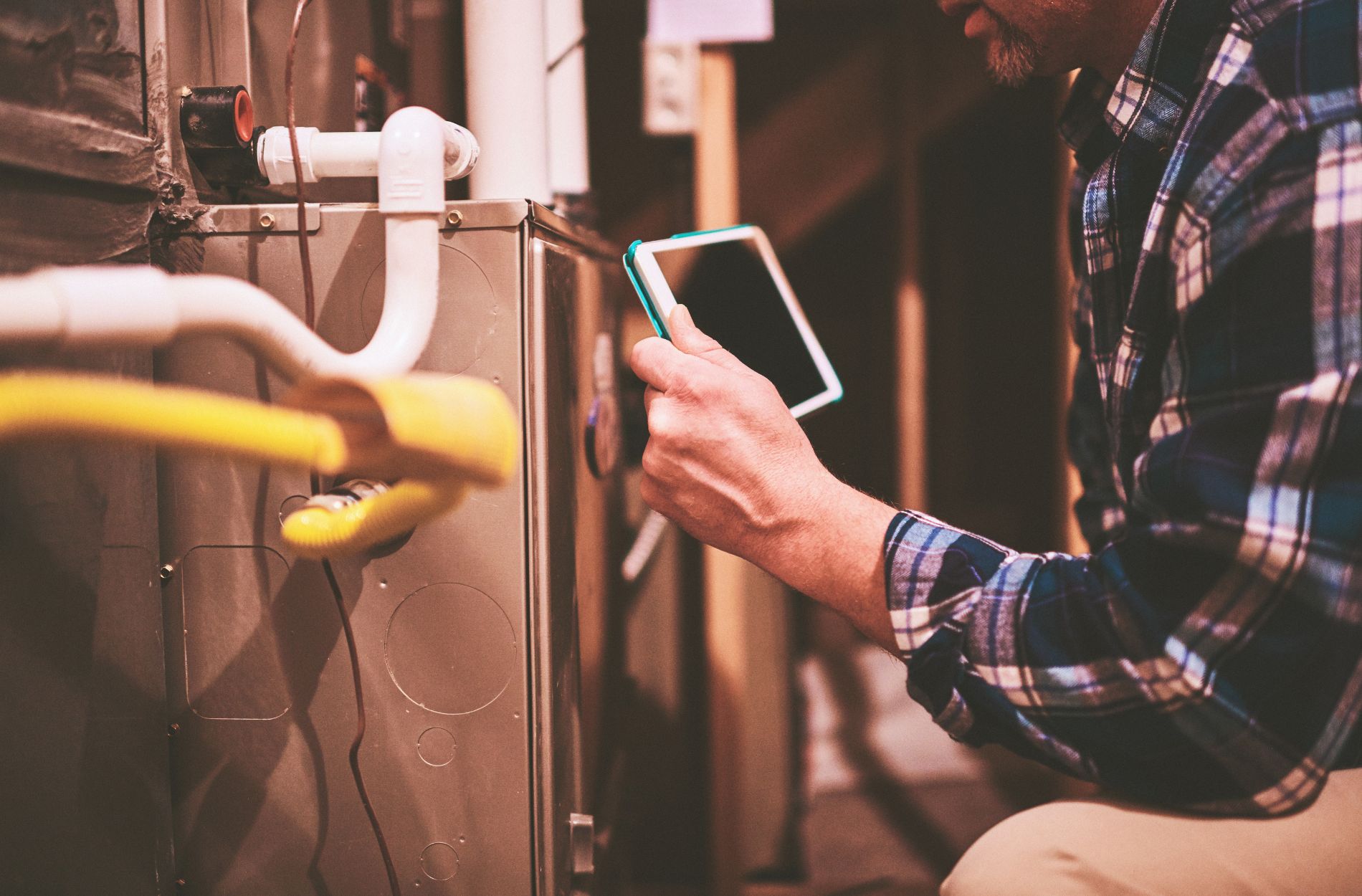When temperatures drop in Fort Smith, a working furnace isn’t something you want to take for granted. It’s what keeps your home comfortable when the chill sets in. But if your furnace won’t ignite when you need it most, that can bring everything to a halt—especially as the colder months approach. This kind of issue often shows up with little warning. One day the furnace ran just fine, the next morning it won’t turn on at all.
Before assuming the worst or scheduling a repair, it’s smart to check a few common problem areas first. Many ignition issues are straightforward fixes that can be addressed quickly. Addressing these simple possibilities first can help you understand where the problem might be and whether it’s something that requires further help from our technicians. Here are the first steps you should take if your furnace won’t ignite.
Check the Thermostat Settings
Start with the most obvious place—the thermostat. It’s often overlooked, but incorrect settings or low batteries can stop your system from running when it’s most needed.
Here’s what to look for:
– Make sure the thermostat is set to “heat.” It can seem basic, but if it was accidentally switched to “cool” or “off,” the furnace won’t start.
– Set the temperature a few degrees higher than the current room temperature so the system is prompted to kick on.
– If the screen is blank or looks faded, replace the batteries. Dead or weak batteries can cause communication issues between the thermostat and furnace.
Some programmable or smart thermostats have energy-saving modes or preset schedules that might keep the furnace from turning on when expected. If you’ve recently updated or adjusted settings, make sure nothing is overriding the heat command.
Confirm Power Is Reaching the Furnace
If the thermostat is doing its job and calling for heat, but nothing happens, the problem might be lack of power to the unit itself. Furnaces need proper electricity to operate—even gas-based systems rely heavily on electric controls and components.
Check the following:
– Look for a standard light switch near your furnace. It might be labeled, but not always. This switch should be in the “on” position. Someone might have turned it off and forgotten to switch it back.
– Go to your home’s electrical panel. Locate the breaker for the furnace and check if it’s tripped. If it is, reset it by flipping it all the way off, then back on.
– For older systems, check the fuse if your unit uses one. A blown fuse will cut off power and stop everything from running.
If everything seems to be powered correctly, and your furnace still won’t start, it’s time to move on to the next step. Sometimes, airflow problems can prevent ignition or cause a safety shut-off.
Check the Air Filter
A dirty or clogged air filter is one of the most common causes of HVAC problems. The filter helps remove dust and debris from the air flowing into your furnace and ductwork. When it gets too dirty, airflow is restricted, and that can keep the furnace from running for safety reasons.
To check your filter:
- Locate the filter near the air intake or in the furnace cabinet.
- Slide it out and hold it up to a light. If very little light passes through, it needs to be replaced.
- Note the size printed on the edge before installing a new one.
Filters should be inspected monthly during periods of heavy use. Most homes do well replacing them every 60–90 days, but homes with pets or allergy concerns may need more frequent changes. A clean filter not only helps your furnace start and run properly, but also improves your indoor air quality.
In one household in Fort Smith, a homeowner spent a weekend uneasy about their furnace not working—only to find out that a filter change was all that was needed. Skipping this step can lead to stress and an unnecessary service call.
Inspect the Pilot Light or Ignition System
Older furnaces often use a pilot light to ignite the burners, while newer models use electronic ignition systems. Each is different in how it works, so it’s important to know what yours uses.
For pilot light systems:
– Carefully check if the pilot light is still lit. If it’s out, follow the manufacturer’s instructions to relight it.
– Make sure the area around the pilot is clean. Dust or build-up can block the flame sensor.
– If the pilot won’t stay lit, it could be a problem with the thermocouple, a small safety device that may need professional care.
For electronic ignition systems:
– Most use either a hot surface ignitor or spark ignitor. These parts can wear out over time.
– If you hear clicking but nothing happens, or if you see the ignitor glow without burner ignition, it may be a faulty ignitor or gas valve issue.
Don’t try to take apart or bypass anything on electronic ignition systems yourself. These components work closely with gas and electrical parts. At this point, it’s best to have our technicians inspect and handle repairs safely.
Confirm the Gas Supply
If everything else checks out, the issue may come down to your gas supply. Gas-powered furnaces rely on a steady flow of fuel to light the burners and generate heat. If the valve is closed or pressure is low, ignition can fail.
Start with a visual inspection of the gas line connected to your furnace. There should be a manual shut-off valve located near where the pipe enters the unit. The valve handle should be in line with the pipe (open position). If it’s turned perpendicular, the gas is off. Gently rotate it to the open position unless you smell gas—then stop and contact our professionals immediately.
Here are a few safety reminders to keep in mind:
– Never force a gas valve that doesn’t turn easily.
– If you detect a sulfur or rotten egg smell, don’t attempt to relight the unit or investigate further.
– Evacuate the area and contact a gas company or our technicians right away.
Some homes also have additional shut-off valves outside or near the meter. If any work has been done around the house recently, it’s worth checking to confirm none were left closed during maintenance.
It’s also possible your gas pressure is too low. While this isn’t obvious without specialized equipment, low gas pressure can prevent the burners from lighting. If the system attempts to ignite multiple times then shuts down, that might be your signal to call in one of our technicians for a deeper look.
Knowing When to Call Our Technicians
You’ve done the basic checks. If none of these steps worked, or if something looked off but you weren’t sure how to handle it, it’s time to call in our professionals. Furnaces are complex machines involving electricity, fuel, high heat, and multiple safety mechanisms. When one part fails, it often causes a chain reaction.
Call our technicians if you notice the following:
– Repeated ignition attempts without success
– Furnace shuts down after a few seconds of starting
– Visible damages like rust, corrosion, or cracks in the burner area
– Blower starts up but the burners don’t ignite
– Strange odors or clicking sounds near the control board
Issues like a faulty flame sensor, damaged ignitor, malfunctioning gas valve, or a problem with your control board aren’t things homeowners should try to handle. Those require diagnostic tools and direct knowledge of HVAC systems.
Even if it turns out to be something small, catching it early can prevent more serious problems. We’ve helped plenty of Fort Smith homeowners avoid major repairs just by spotting a minor issue before it caused more damage. If your furnace has been acting up intermittently or you’ve needed to reset it more than once, that’s a sign something deeper is going on.
Stay Warm Through the Winter in Fort Smith
Getting ahead of ignition problems now can save you a lot of stress during the coldest weeks ahead. A furnace that won’t fire up when you need it can disrupt your entire day—or longer. Taking the time to rule out simple issues like thermostat settings, dirty filters, or a flipped breaker can clear up minor problems. Once those are taken care of, anything more technical should be left to our technicians.
Homeowners in Fort Smith know that winter can sneak up fast. If there’s any question about your furnace’s current condition, this is the right season for a full check-up. The best way to avoid trouble when temperatures drop is to act now. Don’t wait for the first cold snap to figure out if your heating system is reliable. Catching problems early usually means faster, easier fixes.
When you need dependable furnace repair in Fort Smith, Tom’s Heat and Air delivers prompt, professional service to keep your home safe and comfortable throughout the winter. For a quick estimate or to book a service visit, please contact us today.



